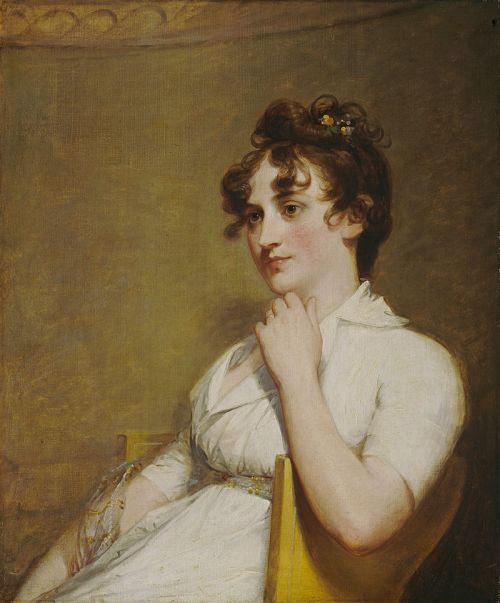Authors:
Historic Era:
Historic Theme:
Subject:
February 1977 | Volume 28, Issue 2


Authors:
Historic Era:
Historic Theme:
Subject:
February 1977 | Volume 28, Issue 2

"Miss Eleanor Custis … has more perfection of expression, of color, of softness, and of firmness of mind than I have ever seen before or conceived consistent with mortality. She is everything that the chisel of Phidias aimed at but could not reach, and the soul beaming through her countenance and glowing in her smile is as superior to her face as mind is to matter.”
These extravagant words convey the impression that Nelly Custis, George Washington’s step-granddaughter, made on the distinguished architect of colonial America, Benjamin Latrobe, when he visited Mount Vernon in 1796. And he was not alone; the Polish Count Julien Niemcewitz, another guest at the Potomac estate at about the same time, called Nelly one of those celestial figures that nature produces only rarely, and insisted that she played, sang, and drew better than any woman in America “or even in Europe.” It is one of the small but touching ironies of history that this dazzling young lady, after a youth of extraordinary privilege and corresponding happiness, spent the latter part of her life as an embittered, unattractive matron in a state of constant complaint.
Nelly was the daughter of Martha Washington’s son from her previous marriage. However, the relationship between Nelly and George Washington was like that of father and daughter. Nelly’s real father, John Parke Custis, had died of fever after following Washington to Yorktown as a volunteer aide during the final stages of the Revolution. After their father’s death, Nelly, then aged two, and her six-month-old brother—who bore the impressive name of George Washington Parke Custis—went to live as permanent members of the Washington household. John Custis’ two older daughters stayed with their mother, Eleanor CaIvert Custis, who would later remarry and bear sixteen more children.
Washington delighted in the care of his two grandchildren. Though constantly busy with his personal estate and the affairs of his country, he took the time personally to oversee the education and upbringing of the two young additions to his family. Late in 1785 he began to look for a person who could serve both as his secretary and as a tutor to the children. In one letter to an acquaintance in England he wrote, “I have a little boy something turned of four, and a girl of six years old living with me, for whom I want a Tutor. They are both promising children, the latter is a very fine one.” He sent out other inquiries, including one to Noah Webster, and by early February, 1786, he had temporarily hired William Shaw.
Shaw was soon replaced by Tobias Lear, a twenty-four-year-old Harvard graduate who had studied in Europe. Washington’s offer to Lear was tempting: “Mr. Lear, or any other who may come into my family in the blended characters of preceptor to the Children, and as a Clerk or private Secretary to